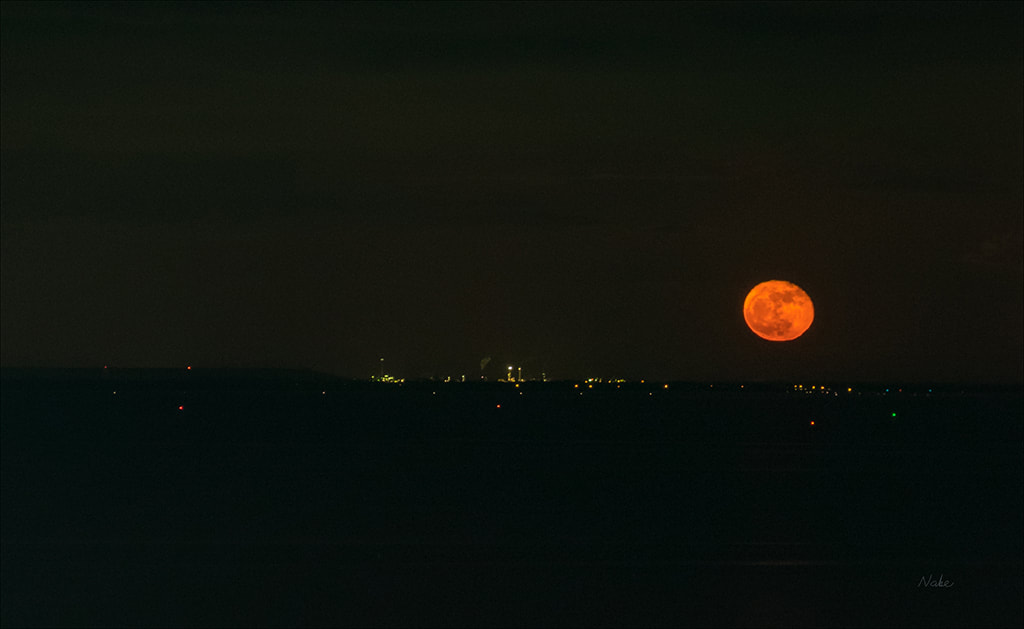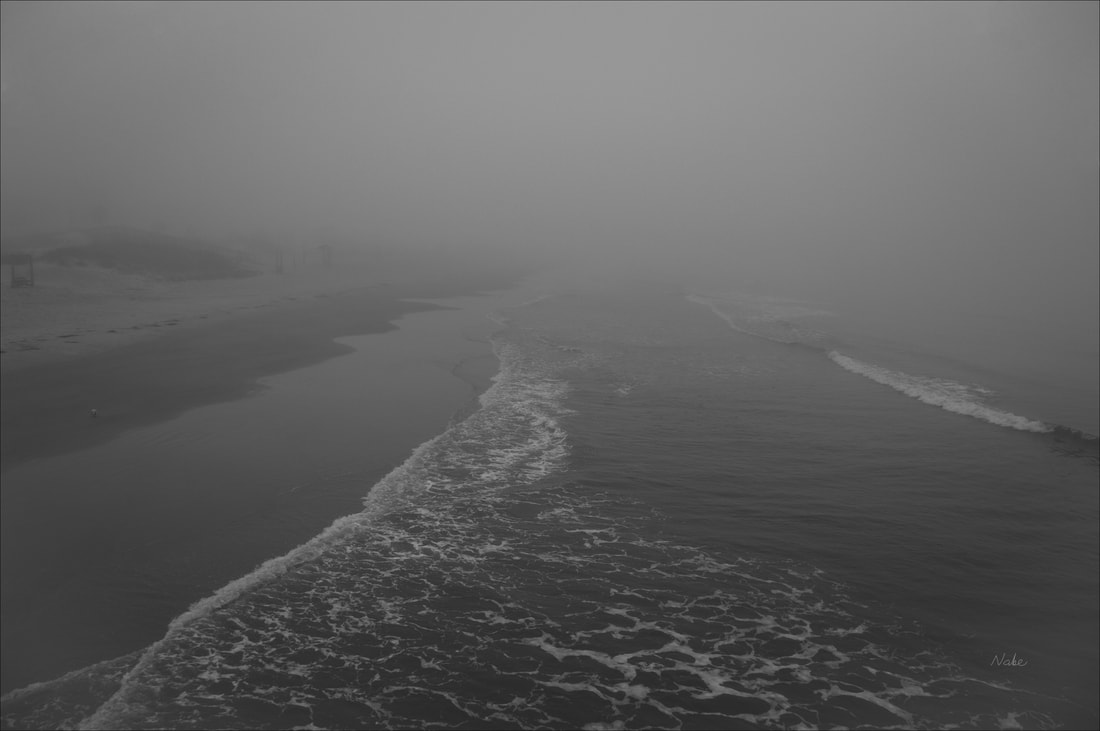Loveseat
November 29th, 201711/29/2017 The city is an excellent place to find and show form, pattern, shadow and light. But it is also often reveals an oppressive compression of space and time. For me, it often feels like a place of no escape: there seems nowhere to find the silence, solitude, openness to contemplation that are essential to locating one's self. Lost or adrift in the mazes of urban life, I experience myself as an alien, with nowhere that feels like "home." I know that this has all been pointed out, really for centuries, and I have often felt this way in my life But once in a while, it becomes more obvious; while the images above "work" to show form, pattern, etc. they also (especially the second one) show the oppressiveness of urban life.
November 27th, 201711/27/2017 Robert Adams wrote about the need for patience when making images:
"How can we hope . . . to see a tree or rock or clear north sky if we do not adopt a little of their mode of life, a little of their time?" November 23rd, 201711/23/2017 In gratitude and thanksgiving, for all we receive:
"For the beauty of the earth, for the beauty of the skies, hill and vale, and tree and flower, sun and moon, the joy of human love, brother, sister, parent, child, friends on earth and friends above . . ." Folliot Pierpoint November 21st, 201711/21/2017 White pelicans have returned to Tampa Bay, a bit early this year Yesterday I read something which left me feeling despairing of our crazy society. But then, this morning, I read this and it reminded me that life is a complex paradox:
"as a kind of rigorous holding of one's life, joy becomes the capacity to train our gaze on many things so that what we see includes what is terrible but also what is wonderful and beautiful." I wrote earlier in this blog that sometimes I wonder why I continue it. But, Gay's words remind me of an answer—the news is constantly full of the "terrible" and to be honest with ourselves we must acknowledge that. But then too, there are white pelicans . . . November 17th, 201711/17/2017 From Art & Fear: "Photographer Jerry Uelsmann once gave a slide lecture in which he showed every single image he had created in the span of one year: some hundred-odd pieces—all but about ten of which he judged insufficient and destroyed without ever exhibiting." I find this comforting—since I know the feeling well . . .
November 15th, 201711/15/2017 Gary Snyder:
Things spread out rolling and unrolling, packing and unpacking, —this painful impermanent world. November 10th, 201711/10/2017 I've been participating in a website concerning impermanence. Gary Snyder wrote about impermanence after the destruction of the Buddhas by the Taliban, when someone suggested that such a loss was just part of the inevitable change of everything.:
"Ah yes . . . impermanence. But this is never a reason to let compassion and focus slide, or to pass off the suffering of others because they are merely impermanent beings. Issa's haiku goes . . . 'This dewdrop world is but a dewdrop world and yet--' That 'and yet' is our perennial practice." November 08th, 201711/8/2017 Gary Snyder gives some hope for the planet: "In the larger scale, things will take care of themselves. It's obviously human hubris to think we can destroy the planet, can destroy life. It's just another exaggeration of ourselves. Actually, we can't. We're far too small . . . The time scale is far too large, and the resistance of cellular life is far too great. But that's . . .no excuse for doing things poorly. A kind of bottom line is that all human activity is as trivial as anything else. We can humbly acknowledge that and excuse ourselves from exaggerating our importance, even as a threat, and also recognize the scale and the beauty of things. And then go to work. Don't imagine that we're doing ecological politics to save the world. We're doing ecological politics to save ourselves, to save our souls . . . It's a matter of living right. It's not that the planet requires us to be good to it. It's that we must do it because it's an aesthetic and ethical choice.."
November 06th, 201711/6/2017 I went out last evening to make an image of the rising moon. But while waiting for that, I turned around and there was the city, lit up as I have rarely ever seen it. A moment of "epiphany," "awakening." And I thought about what I've been (re)reading in Gary Snyder's work. His is a voice I return to again and again, and find myself re-awakened by it. In a book of interviews and letters (Nobody Home), he repeated what he had said elsewhere, that the "wild" is present even in the city. This is an ongoing puzzle and question for me. Snyder's life experience is quite different from mine; he has spent most of his in what we usually think of as the "wild," i.e., natural wilderness. Mine has been entirely within urban environments. So I find it interesting and suggestive when someone points out that the wild is present in the city too (and everywhere). He also spent some effort in emphasizing that what is important is paying attention, wherever one finds oneself. Finally, and relevant to my experience last night, he wrote: "Epiphany is that moment when you become one with something. The swoop of a bird, the sound of the rain, the clack of a broken tile, peach blossoms. And also, another human being." I also came across one of his poems that gets to this really well, I think. It is in Danger on Peaks:
small birds flit from bough to bough to bough to bough to bough to bough That's something I often see, looking out my window, or down by the bay . . . November 04th, 201711/4/2017 I first read the Dao de Jing in graduate school and it has fascinated me and influenced my thinking ever since. The Dao is the way the universe works—for instance in constantly changing and in cycles. It is also the origin, or the source from which everything arises (and into which everything returns). For me, fog is also relentlessly fascinating and I think, if not consciously, this is because it is (for me) like the Dao. As in the image above, everything which is discernible through our senses, everything we experience as something we can use language to describe arises out of what is somehow indistinct. Looked at in one way, starting from the bottom of the image, what we see in the image (waves, shore) gradually fades (slips away) into the indistinctness at the top. Or looked at the other way, beginning in the fog, things gradually emerge. There's a sort of pulsation here—from what can not be discerned (and so can not be put into words—the fog) to what is discernible (individual waves, shapes, forms, clearly different from the shoreline with its curves, forms). These are not so much metaphysical claims as descriptions of our experience. This reminds me of what someone once said to me about the first book of Genesis: it describes what it's like to watch the dawn: at first all is dark, formless, then there is a glimmer of and then growing light, then forms, shapes, plants, animals, etc. begin to be discernible. I find that description relevant to my understanding of the Dao—and of the experience from which the image was made. Actually, some in the West have found similarities between these Daoist teachings and what some Western religious and philosophical teachers have said about God. Neither the Dao nor God can finally successfully be put into language—they can only be experienced.
I find that the image shown provides some understanding of these lines from the Dao de Jing: The (Dao) that can be told of is not the eternal (Dao); The name can be named is not the eternal name.. The Nameless is the origin (source) of Heaven and Earth. Categories |











 RSS Feed
RSS Feed